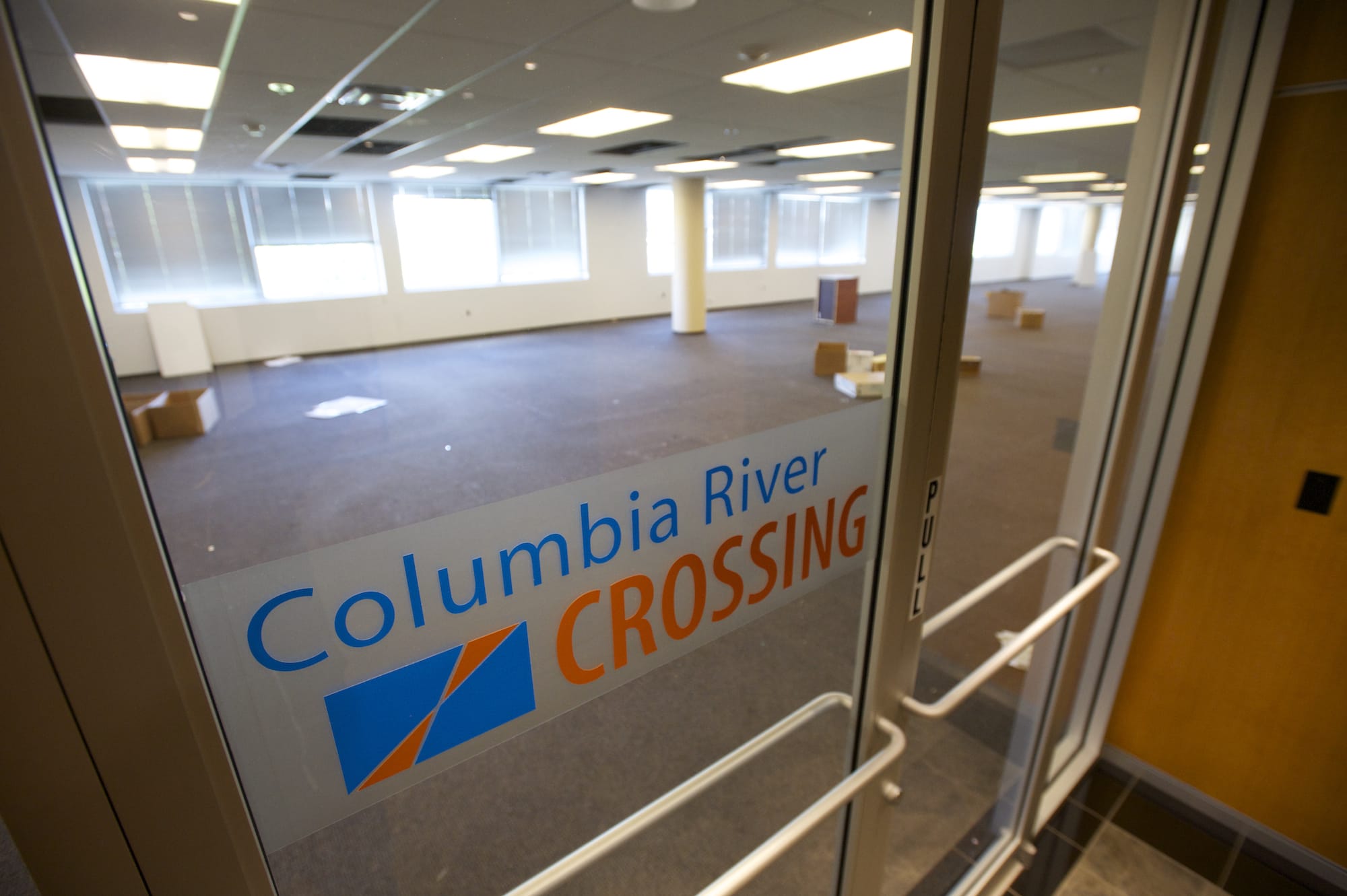This month marks an important shift in the way local leaders talk about the Columbia River Crossing. They’ll now refer to the defunct Interstate 5 Bridge replacement in past tense.
“Is” becomes “was.”
“Would” becomes “would have.”
Even the CRC website now notes the project’s 2014 demise, saying it “was completely closed in May of that year.”
The CRC’s downtown Vancouver offices were all but cleared out earlier this week, save for only a scattering of boxes and loose papers. All of the temporary walls, desks and furniture once inside are gone. The move-out leaves an entire floor of the Vancouvercenter building vacant.
Officials are sticking with May 31 as the formal shutdown date. That’s the day the project’s lease ends, too. Even though the office is mostly empty, some cleanup work remains, said Dave Thompson, an Oregon Department of Transportation spokesman.




